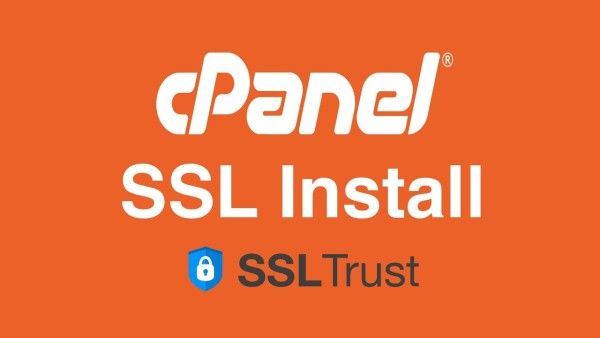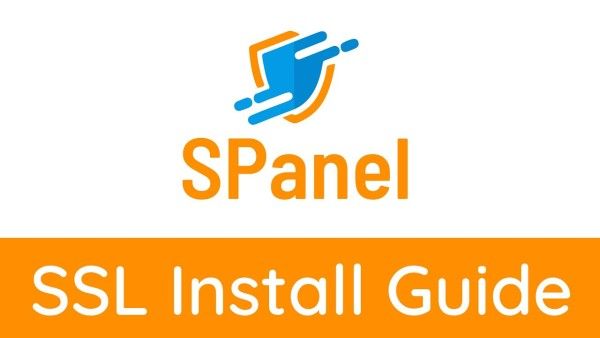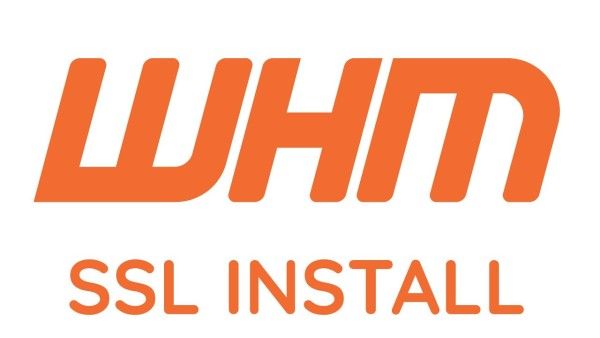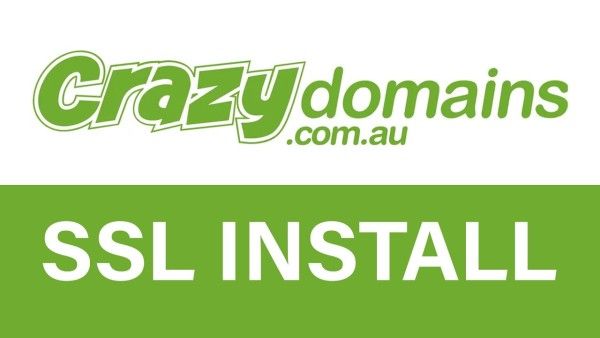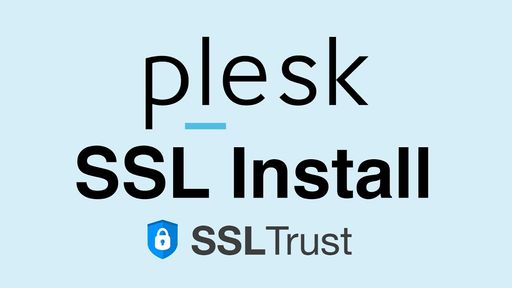
install an SSL/TLS Certificate in Plesk Video Guide
Step 1. Generating a CSR and Private Key
1: Login to your Plesk Web Hosting Manager and navigate to the dashboard.
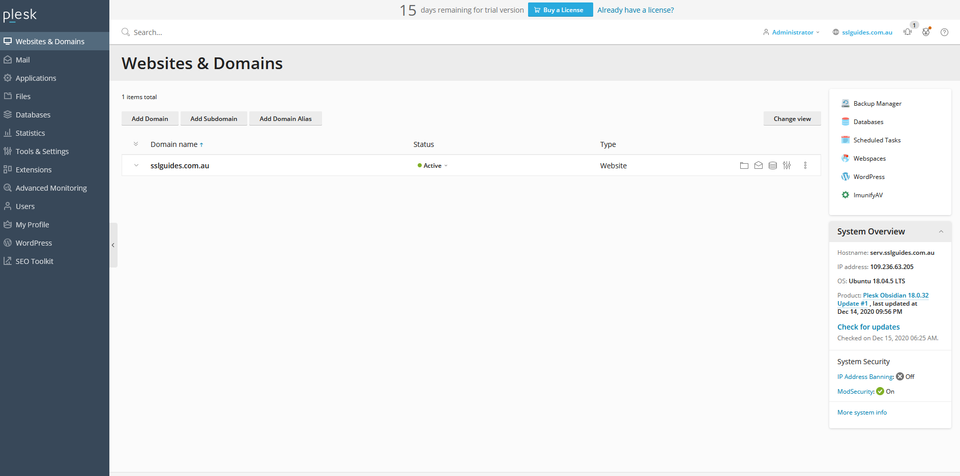
2: Expand your domain name and click on SSL/TLS Certificates under Security
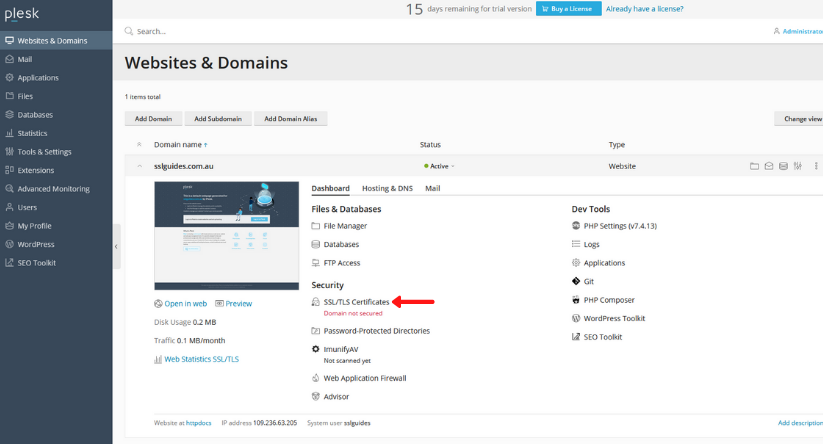
3: On the right side of the window, click on Advanced Settings
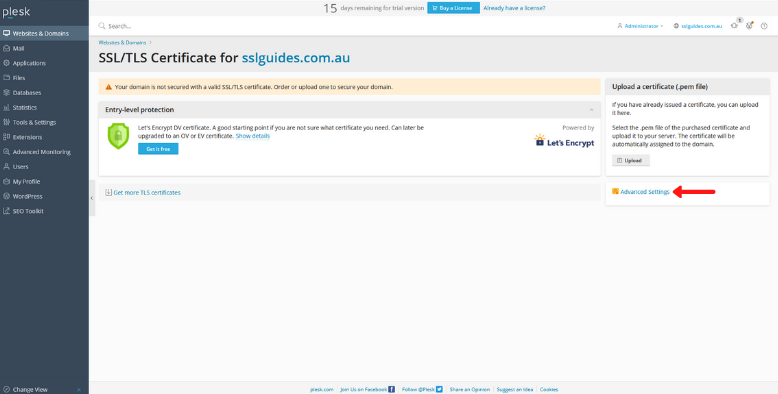
4: Click on Add SSL/TLS Certificate
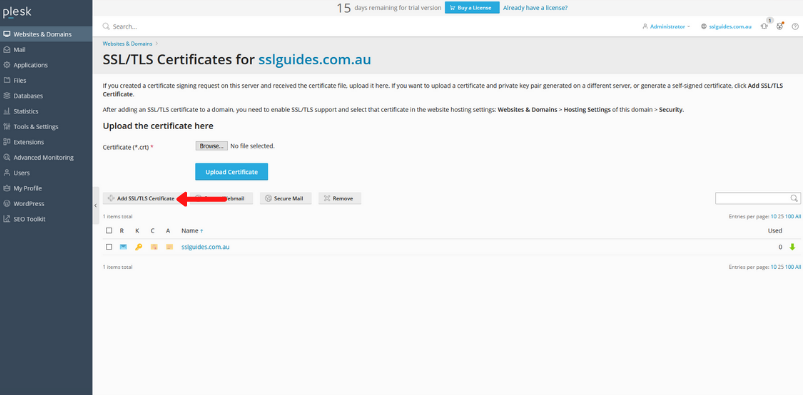
5: Fill in all your details accordingly
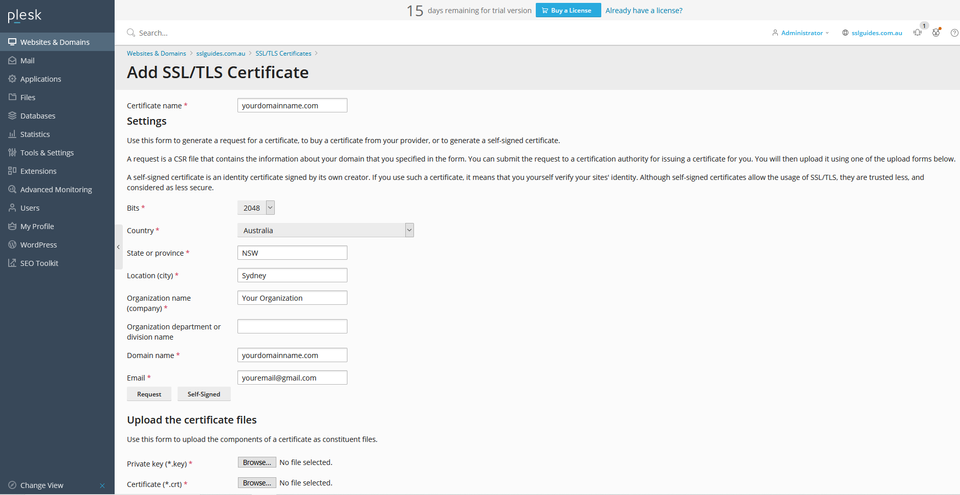
City: Complete name of the city, no abbreviations.
State: Full name of the state.
Country: Choose your country from the dropdown list.
Company: If you are a business; Enter your legal entity name. If you're not a business, any value entered will not be used in your certificate.
Company Division: If you are a business; Write the appropriate division of your company. It is best to use something generic such as "IT".
Email: Enter your email address
6: After filling in all your details, click on the Request button
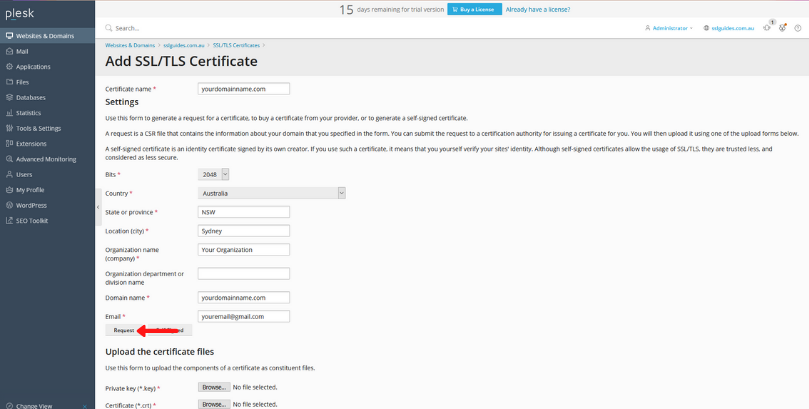
7: After you click on the Request button, your CSR and Private Key Should be generated. Scroll down the page to view it.
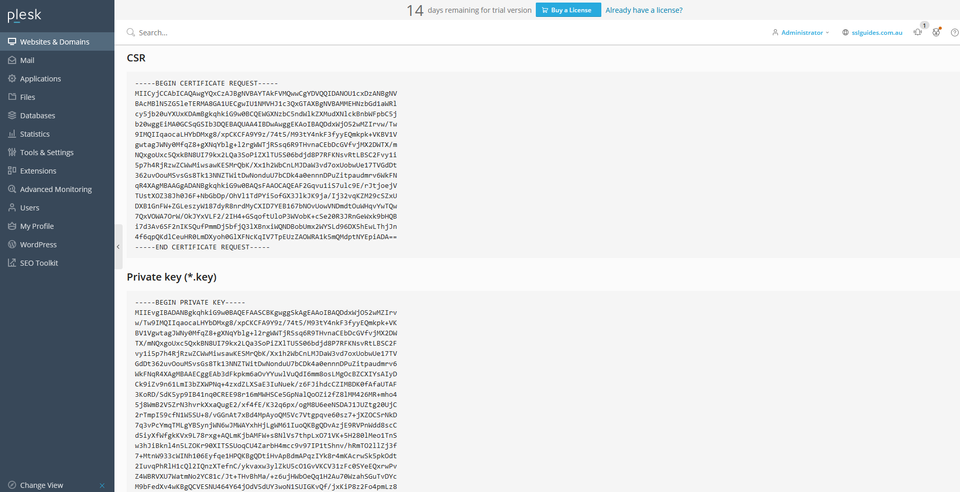
Please keep this window open as you will need to copy your CSR Code to be used shortly.
Step 2. Order and Configure the SSL Certificate
Now, we need to buy an SSL Certificate. If you visit our SSL Certificates List page, you will see options available, such as a low-cost domain-validated SSL or a wildcard SSL, which also secures the sub-domains.
Cheap SSL Certificates
View our low cost SSL Certificates with domain validation.
Starting at $ per year
Business Certificates
View our Business Certificates to secure and verify your business.
Starting at $ per year
If you require any assistance with selecting an SSL Certificate, please feel free to contact our sales team and they will be happy to assist.
1: Order the SSL and complete the checkout.
2: Once you have completed the SSL Certificate Purchase you can begin the configuration process. This can be started by going into your SSLTrust account and managing your recent purchase.
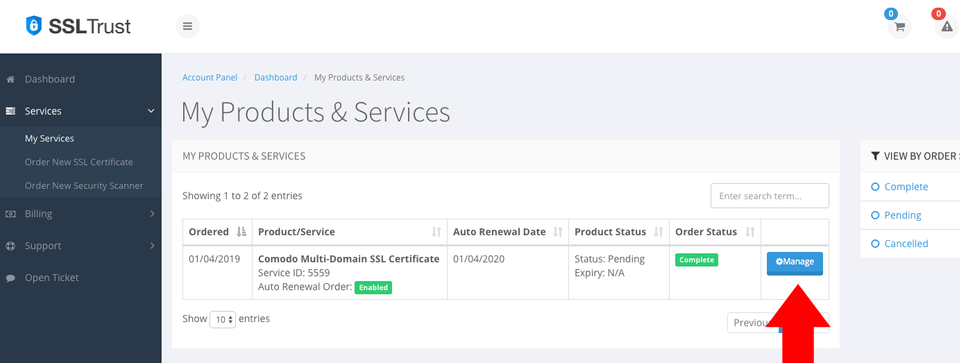
You then will need to click the Submit Configuration button to begin the configuration process.
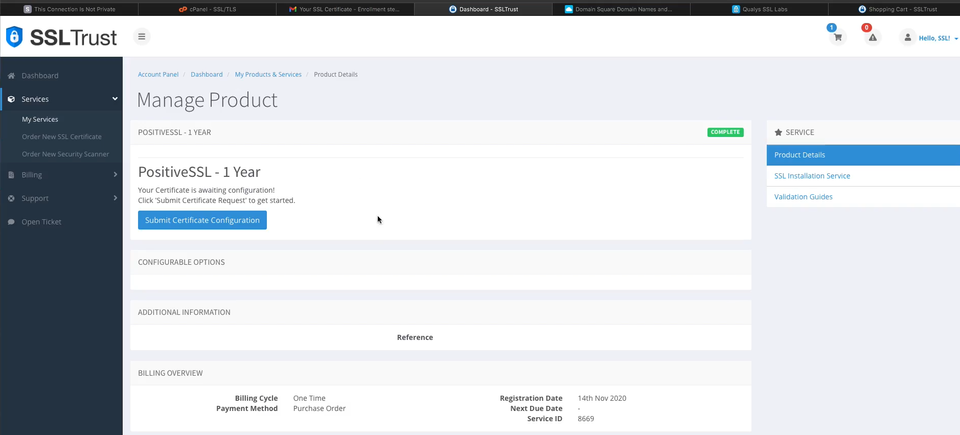
3: You now need to paste in the CSR you generated in your cPanel Web Hosting. This includes the lines:
bash
-----BEGIN CERTIFICATE REQUEST---- -----END CERTIFICATE REQUEST-----
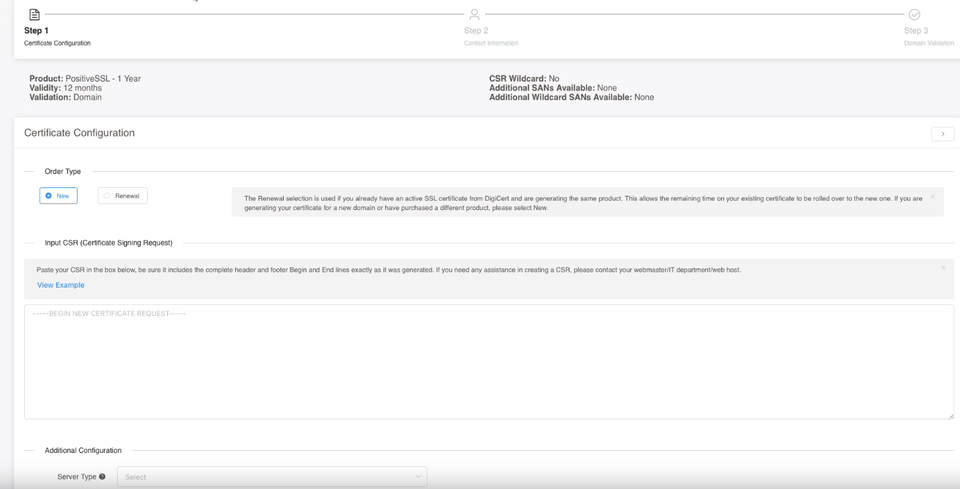
Select Plesk for your Web Server Type.
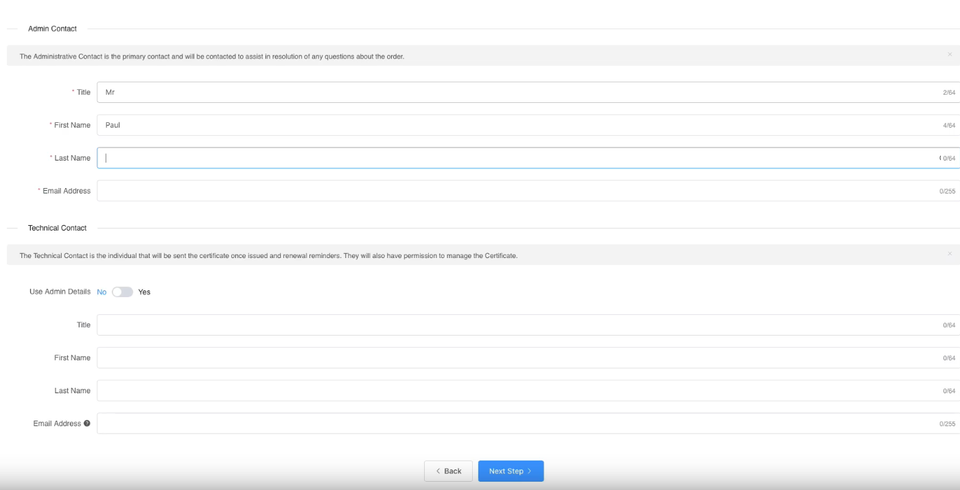
You will need to also enter the Site Administrator Contact Information.
This information is to be of the individual who is responsible to approve and SSL Certificate. If it is a business SSL, it needs to be a contact under the business.
The Technical Contact Information is the details of the individual responsible for the installation and management of the Certificate.
If you have ordered a business SSL, you will also be required to enter your business details. These should be the correct address and phone number and legal entity name. They will be required to be validated by the Certificate Authority, any mistakes will cause delays. More information on Business Validation can be found here.
4: Click Continue to go to the next Step. Here you need to select the Authentication Method to validate your domain name. This is required to prove you own the domain name and have permission to issue an SSL Certificate for the domain.
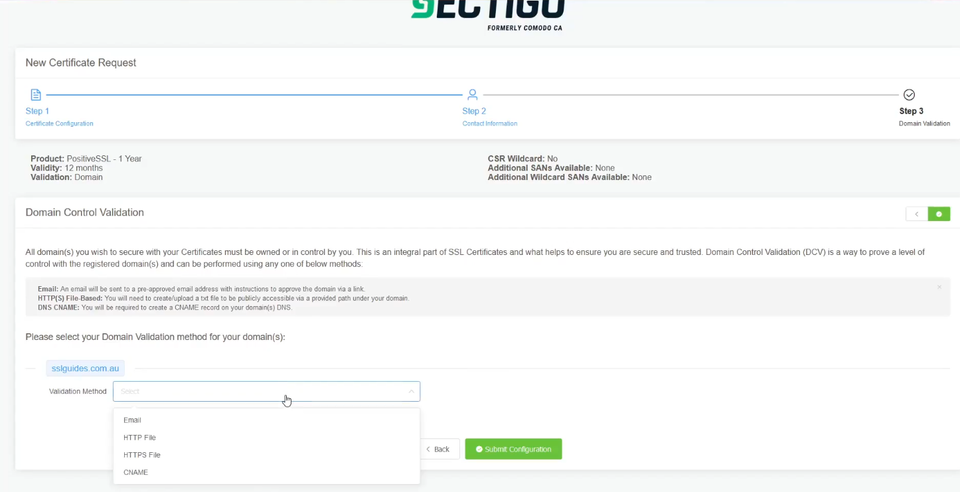
Select the method that will be the easiest for you to use; File-Based Authentication ( HTTP / HTTPS ), CNAME Based Authentication ( DNS ) or Certificate Approver Email.
If you have access to one of the listed emails, this can be the quickest method
Click Continue/Submit to finish the Configuration process.
After you complete the domain validation via your selected method, your SSL will be issued. If you ordered a Business SSL, you will need to wait for the Certificate Authority to complete the Business address and phone validation. If the validation has not progressed, or you have not received your Certificate after some time, please contact our support team so we can check on its status.
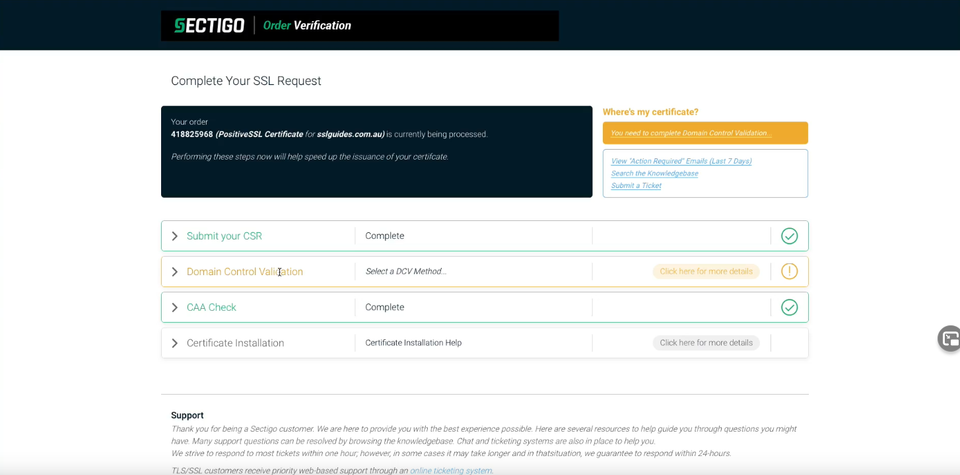
Step 3. Install the SSL Certificate on Plesk
When your SSL Certificate has been issued, you will be emailed the Certificate Directly from the Certificate Authority. You can also download it from your SSLTrust Portal. Downloading it from the SSLTrust Portal is a good option as we format the certificate in an easy to use way.
Again; View your certificate management page within SSLTrust

1: Click on the Manage button and collect/download your certificate
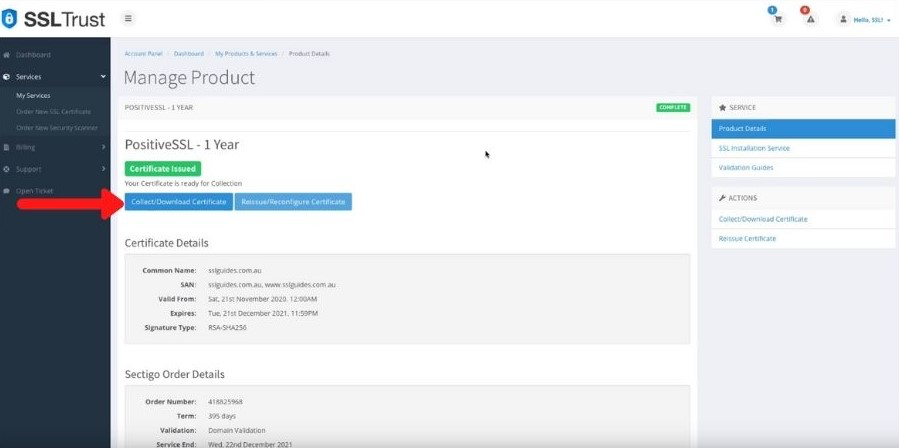
2: Go to the first column and click on copy to clipboard
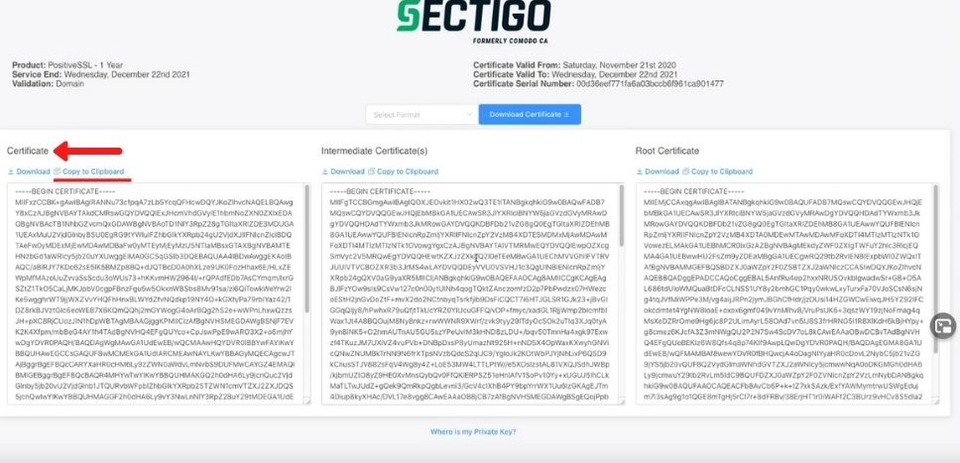
3: Head back over to your Plesk Dashboard and go to the SSL/TLS setting again.

4: On the right side of the window, click on Advanced Settings again

5: Click on your domain name
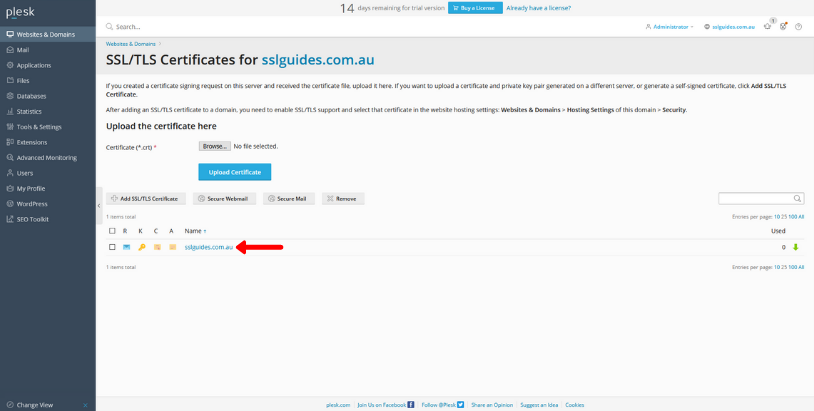
6: Scroll down and find Upload the Certificate as a text input boxes
Paste in your CRT which you had previously copied to your clipboard and paste in the contents.
You will also have to manually copy and paste your CABUNDLE (Intermediate Certificate) which is the second column where you downloaded your certificate.
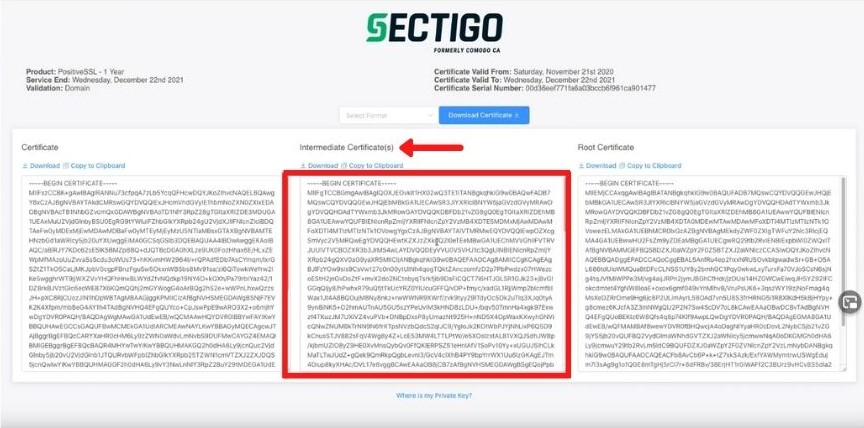
After you’ve filled both the certificates, scroll down and click on the Upload Certificate button
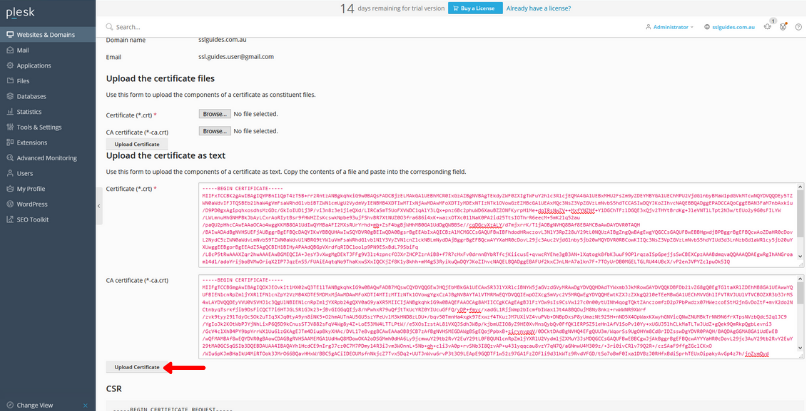
Once you’ve uploaded both your certificates, you will now need to manually activate it from the hosting settings.
7: Head back to your Dashboard and click on your domain name. Click on the Hosting Settings on the top right corner
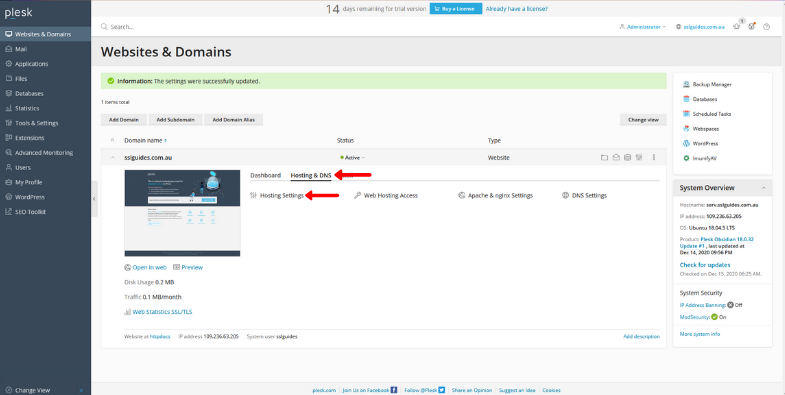
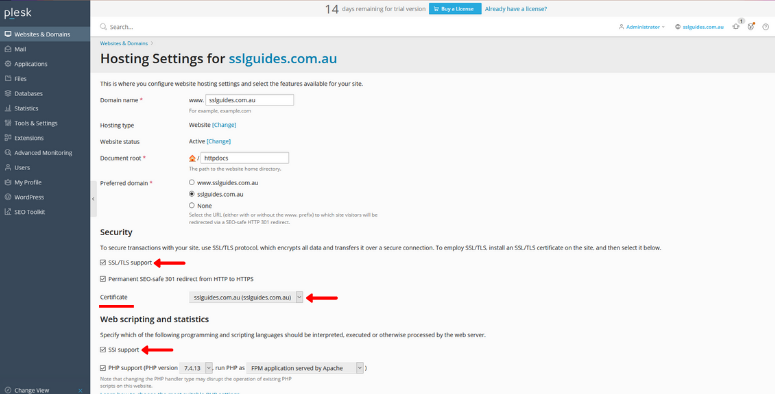
You’ll now need to select your domain name under certificate and make sure you turn on SSL/TLS Support under both Web Scripting and Security.
Scroll Down and click on Apply Settings.
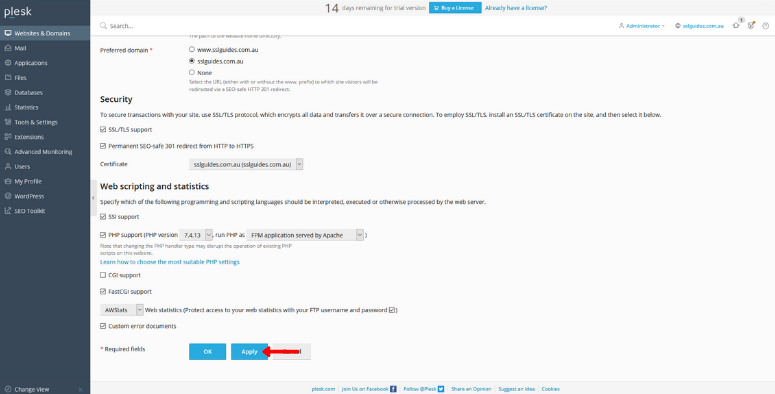
Step 4. Check the SSL is working
SSLTrust's Free SSL Checker is a tool that allows you to test and validate the SSL/TLS certificates installed on websites. Simply enter a domain name and it will analyze the certificate, providing details like the issuer, expiration date, encryption strength, and whether the certificate is properly configured and trusted by major browsers and operating systems. In SSL tests, receiving an "A" rating typically signifies that the SSL certificate and its configuration meet high security standards.
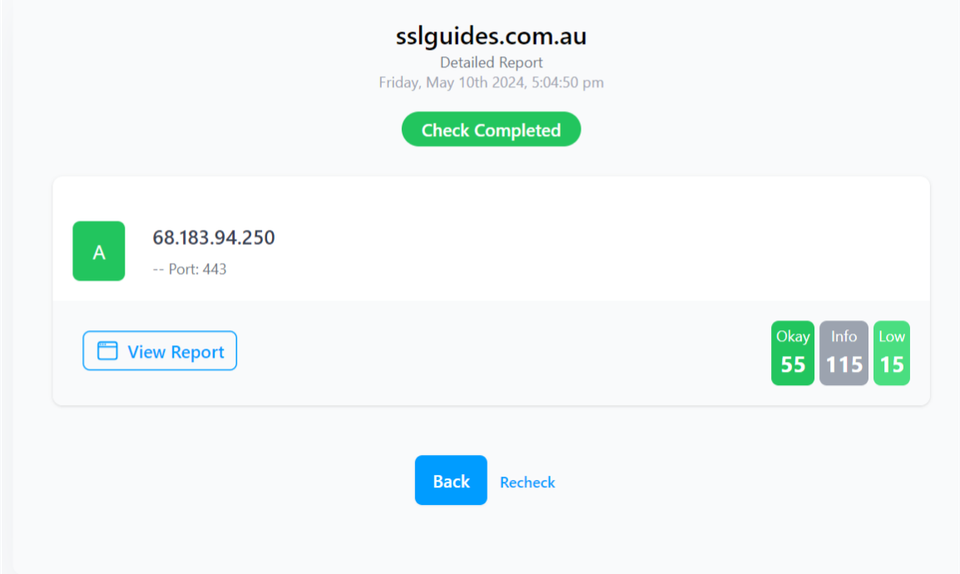
The checker highlights any potential security issues or misconfigurations with the SSL implementation. This free tool makes it easy to verify if a website's SSL certificate is valid and secure, giving visitors confidence their connection is encrypted and their data is protected from eavesdroppers.
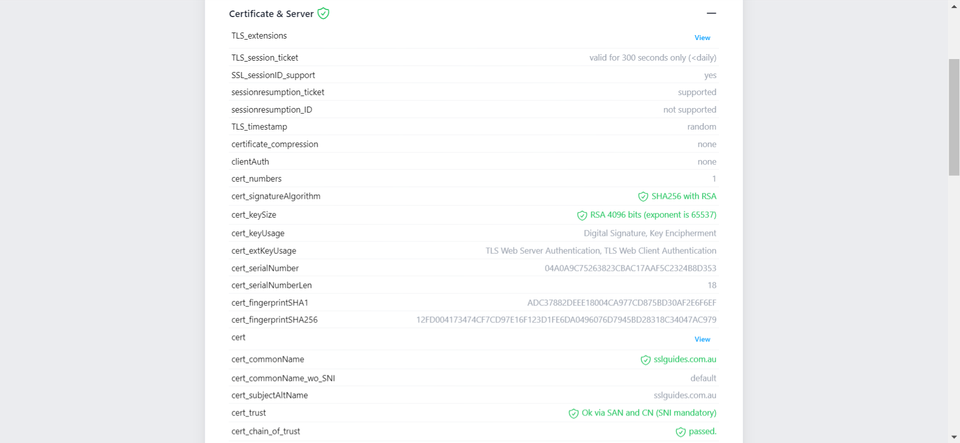
Additionally, you can also performed a detailed check which generates an actionable report with all the ins and out of your SSL Certificate. This includes Protocols, Ciphers, Vulnerabilities and much more.
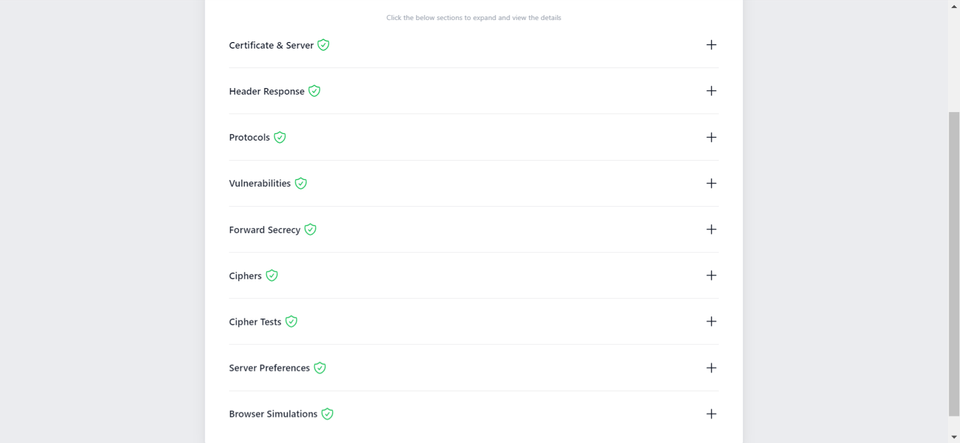
-
You might require assistance from your web developer or make the necessary updates to your website personally to ensure that all files utilize "https://" and all links leading to and within your website employ "https://".
If you run a server test to check your SSL and find that you receive a rating less than an A, you may have all versions of TLS turned on. You’ll need to turn TLS 1.0 and 1.1 off and leave TLS 1.2 on.
You can do this by accessing your server via SSH and pasting in a few commands. You can find the commands here.
shell
/usr/local/psa/bin/server_pref -s | grep ssl-protocols #ssl-protocols: TLSv1 TLSv1.1 TLSv1.2 /usr/local/psa/bin/server_pref -u -ssl-protocols "TLSv1.2" /usr/local/psa/bin/server_pref -s | grep ssl-protocols #ssl-protocols: TLSv1.2
If you require any assistance with your SSL Installation please contact our friendly support team.
Discussions and Comments
Click here to view and join in on any discussions and comments on this article.


